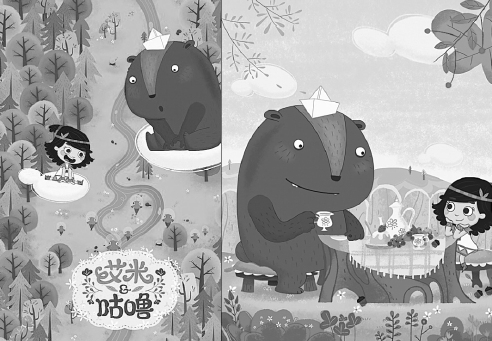An animated vision for the future
China's animation sector is catching up with countries where the industry is already mature,Wang Ru reports.

The Chinese animated film Ne Zha, which grossed more than 5 billion yuan ($773 million) in China in 2019, inspired many people in the country's animation industry, including 41-year-old Yu Xin, who's now CEO of the animation company, Left Pocket Studio.
"The industry has developed rapidly in China compared with a decade ago when I returned to engage with animation," Yu says.
When she graduated with a degree in animation from the University of the Arts London's Central Saint Martins College of Art and Design in 2006, she was curious about various jobs and worked in many sectors, including advertising and illustration.
But she ultimately decided to work in animation because "animation is a very good form of expression with bright prospects", she says.
She then worked in an animation company in London, where she found her colleagues believed stereotypes or understood little when it came to Chinese animation.
"They either believed Chinese animation was crudely made or difficult to understand," Yu says.
"But their opinions couldn't persuade me, since I know China had quality animated works from years before, like The Monkey King produced by Shanghai Animation Film Studio in the 1960s."
Moreover, she increasingly felt Britain's mature animation industry left little room for her own creations. So, she returned to China in 2009 and opened her own animation company with friends in 2012.
"I decided to make original Chinese animation and hope the works will be enjoyed by not only domestic viewers but also global audiences," says Yu.
Yu first led her team to take part in various animation projects initiated by foreign companies to gather experience and understand the requirements of international-quality animated works.
"I noticed Chinese animation lagged behind in experience, techniques and investment compared with many countries where the industry is very mature. So, it was challenging to figure out how to make works of the same standard as foreign counterparts with our limited abilities and funding."
Working with foreign companies especially taught her about the risks in making animated works.
"For example, some countries prohibit scenes of children playing alone near lakes in animation for fear of endangering children viewers," she says.
"It reminded me to give greater consideration to young audiences. Some plots seem OK for adults but may include potential risks for children, which we must avoid."
Yu's efforts paid off. In 2014, her company's original cartoon, Emmy& Gooroo, won the MIP Junior International Pitch prize.
The judges said, "The happiness and courage shown in this work is meaningful in any cultural background."
The cartoon has since aired in over 40 countries.
"We worked very hard when making its first season, and we made dozens of adjustments to the final version, visually and plot-wise, to make it a work with Chinese features that can be appreciated by viewers abroad," Yu says.
She tries to balance cultures.
For example, a foreign scriptwriter on their team proposed an idea of kids sending their used toys to others as gifts.
Yu likes the core idea but believes Chinese may find it strange, since they tend to give new, rather than secondhand, items as gifts.
"So, I proposed changing the plot to children using materials from their extra toys to create a new game or toy with their friends. It keeps the core idea, yet can be acceptable to both Chinese and foreigners," Yu says.
Wang Chaoyue, a member of Yu's company who has worked with her for a decade, says their efforts to create internationally recognized animation can effectively spread Chinese culture.
"We want to make cartoons with Chinese characteristics. But we can't achieve that goal by simply adding some typical Chinese elements like qipao (a traditional Chinese dress). Instead, we must show some forms of Chinese culture or thought," she says.
"Domestic audiences think our works are fancy, while foreign animation professionals find they're full of Chinese characteristics. That's our direction."
Wang says of Yu, "Her love leads her to spare no effort on quality, despite the cost of human and material resources."
Yu's company has produced other quality cartoons like Mini Mind Warriors, a finalist in the Kids Content category of the 2017 MIPTV Digital Short Form Series Pitch. Its second season received 100 million views on Tencent Video in 2019.
"Chinese animation has developed quickly in the past decade. The gap is obviously narrowing between China and countries with mature animation industries," Yu says.
"Our country stresses cultural exports now and supports the development of this industry, giving us more opportunities and attracting more talent. This will lead to more quality works."



Today's Top News
- Unified national market a new growth launchpad
- US deal a structural challenge for Japan
- Industrial prowess of China a subject of serious study
- US new tariffs 'unfair': Experts
- NDRC recalibrating steps to drive growth, boost demand
- Wartime hero's legacy fortifies Sino-UK bond






























